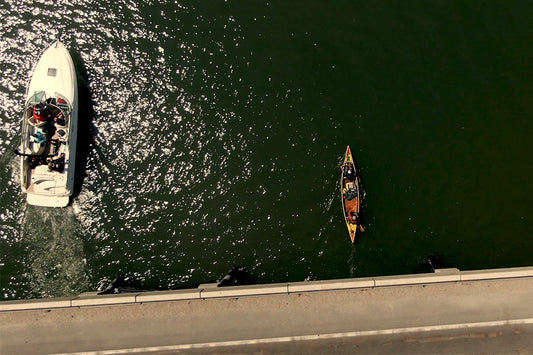What is Batoning?
Batoning is a survival and bushcraft technique that can be used as an alternative to traditionally chopping wood with an axe, or a hatchet. Batoning can be extremely useful for getting to the dry core of a log when making firewood in wet environments.

Why not just bring a hatchet?
Safety, energy output and weight are a few major advantages of Batoning. Chopping wood with an axe can be dangerous, especially if you are inexperienced. In a true survival situation where you could be hours away from the nearest hospital, it’s important to mitigate as much risk of injury as possible. Next, if you’re building a fire, you’re probably trying to stay warm. Batoning is a physical exercise and will cause your body to produce heat, which will keep you warm while you build your fire. Finally, a good fixed blade will certainly be lighter and more packable than a hatchet, or an axe.
The Knife
Using an appropriate knife is extremely important when batoning. Generally, you can baton with just about any full tang fixed blade knife. You want the blade to be about 2-3 inches longer than the diameter of the log, so a longer knife blade will give you more versatility. If you have the option, a thicker blade is going to make the process a bit easier.

The Baton
The Baton is the piece of wood that you will use to strike the knife into the log. Ideally you will find a piece of wood that is slightly wider at the top and narrower at the handle (club shape). Do Not use a rock as your baton. Striking your blade with a rock will significantly increase the chance of a broken blade.
The Process
First you want to set the blade into the log that you want to chop. Place the knife blade on top of the log keeping the blade angle as flat as possible. Strike the middle of blade to begin your cut.

Once you have the knife started, proceed to strike the blade end of your knife with your baton. Make sure to try to keep even pressure on the handle, so that your knife stays as flat as possible.

You will likely need to readjust your knife during the batoning process. Wiggle, or lightly tap the handle side of your knife and readjust to keep the blade flat.

Continue batoning until the wood splits, or until it can be pulled apart. If the ground is wet and muddy, you may want to place the base of the log on a rock, or a stump. If you use a rock as your base, make sure to pull the knife out before the end of the cut, so that you don’t drive the knife blade into the rock.

After you split the first log, you can continue to baton the the smaller pieces into kindling.
Final Notes
The technique comes quickly, but it does take some practice. Like all other survival skills, it’s important to practice your skills in a non-survival situation. Spend some time on dry firewood to get a feel for the technique and then once you feel comfortable, try experimenting with harder and softer woods.
*Always try to abide by the Leave No Trace principles. Only use downed, dead logs to make your fire. Burn all wood and coals to ash, put out campfires completely, then scatter cool ashes.






0 Comments